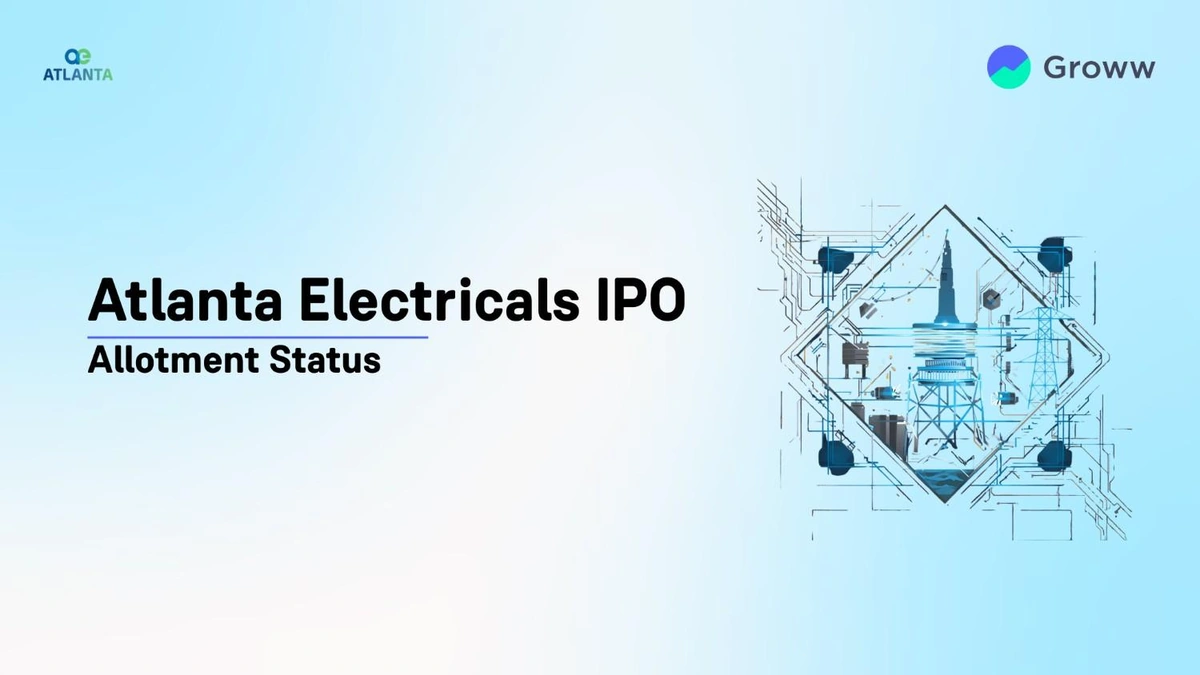The NSDL Share Story | Why This Isn’t Just Another IPO (And What It Means For You)
Alright, let’s talk. Grab a coffee (or chai, your call) and pull up a chair. We need to discuss something that’s been bubbling under the surface of the Indian stock market: the nsdl share .
Every time you buy or sell a stock on Zerodha, Groww, or any other platform, you see the confirmation message. The shares appear in your demat account like magic. But have you ever stopped to wonder how? Who is the digital wizard making sure that Reliance share you bought actually belongs to you and isn’t just a figment of a server’s imagination?
For millions of us, that wizard is the National Securities Depository Limited, or NSDL. It’s the silent, invisible giant that holds the entire architecture of our market together. And now, for the first time, this giant is planning to go public with an IPO.
Here’s the thing: this isn’t just another tech company or manufacturer listing on the exchange. This is different. This is the plumbing of the market itself being offered up for ownership. What fascinates me is the ‘why’ behind it all. Why now? And more importantly, what does it mean for you, the retail investor? Let’s break it down.
So, What on Earth is NSDL Anyway? The Invisible Engine of Your Demat Account
Think of it this way. Before the 1990s, investing was a physical nightmare. You’d get these ornate, beautifully printed (but incredibly cumbersome) paper share certificates. Selling them involved a ‘transfer deed’, signatures, and days, sometimes weeks, of waiting. It was slow, risky, and riddled with potential for fraud and loss.
Then, in 1996, NSDL happened. It was revolutionary.
NSDL, along with its counterpart CDSL (Central Depository Services Ltd.), ushered in the age of dematerialization. They became the two central depositories in India. Their job? To hold your securities (stocks, bonds, mutual funds) in a digital, or ‘dematerialized’, format. They are essentially giant, ultra-secure digital lockers for the entire country’s financial assets.
So, when you buy a share, your broker (the HDFC Securities or Upstox of the world) communicates with the exchange, and the final settlement happens through one of these two depositories. NSDL credits your demat account with the shares, and the seller’s account is debited. It’s seamless, fast, and secure.
What’s crucial to understand is that NSDL operates in a duopoly. Just two players control the entire depository market in India. This creates an incredible “moat” a protective barrier against competition. You can’t just wake up one day and start a new depository. It requires immense trust, technology, and, most importantly, regulatory approval. This duopoly is at the very heart of the investment thesis for the nsdl share .
The Big “Why” | Why is an Infrastructure Giant Like NSDL Going Public Now?

This is where things get interesting. NSDL isn’t raising money to build a new factory or launch a new product. The upcoming IPO is an “Offer for Sale” or OFS. In simple terms, this means the company itself isn’t issuing new shares to get cash. Instead, its existing shareholders are selling their stake to the public.
Who are these shareholders? A look at NSDL’s ownership is like a who’s who of the Indian financial system: major banks like IDBI Bank, State Bank of India, and HDFC Bank, alongside institutions like the National Stock Exchange (NSE). These were the entities that helped build NSDL from the ground up.
So, why sell now?
- Unlocking Value: These institutions have held their stakes for decades. The Indian market is booming, and investor participation is at an all-time high. It’s the perfect time for them to cash in on their long-term investment.
- Regulatory Nudges: The market regulator, SEBI, has been pushing for Market Infrastructure Institutions (MIIs) like depositories and exchanges to be listed. Listing improves corporate governance, transparency, and provides a clear valuation benchmark.
- The Precedent: They’ve seen the spectacular success of their competitor, CDSL, which listed in 2017 and became a massive wealth creator for its investors. The temptation to replicate that is huge.
Understanding that this is an OFS is critical. It tells you that your investment isn’t funding NSDL’s future growth directly, but rather providing an exit for its founding investors. This isn’t necessarily bad it’s a sign of a mature company but it’s a different investment proposition compared to a company raising capital for expansion.
NSDL vs. CDSL | The Sibling Rivalry Investors Can’t Ignore

You can’t talk about the nsdl ipo without talking about CDSL. It’s the elephant in the room. CDSL’s stock has been a darling of the market, and every potential investor in NSDL will be making a direct comparison. But let’s be clear: they are not identical twins.
Here’s a coffee-shop breakdown:
- Client Base: CDSL has historically focused more on retail investors, which is why it has a much larger number of active demat accounts. NSDL, on the other hand, has a stronger foothold in the institutional segment—custodians, big fund houses, and FIIs.
- Revenue Model: Because of its institutional focus, NSDL’s revenue per transaction tends to be higher. CDSL plays the volume game; NSDL plays the value game.
- Market Share: In terms of the number of demat accounts, CDSL is the leader. But in terms of the *value* of securities held, NSDL is the undisputed king. This reflects its institutional dominance.
When CDSL went public, it was the first of its kind. It had the novelty factor. NSDL is coming to the party later, but with a different, arguably more premium, business profile. The success of the IPO will heavily depend on the nsdl share price band. If it’s priced reasonably, considering its slower but more stable institutional revenue, it could be very attractive. If it’s priced for the moon based on CDSL’s retail-driven hype, investors might need to be more cautious. A deep dive into any kaynes share price analysis shows how crucial valuation is for tech-enabled infrastructure plays.
The Million-Rupee Question | Should You Invest in the NSDL Share?

Let’s get this out of the way: I’m not giving you financial advice. My goal is to give you the framework to make your own informed decision. So, let’s weigh the pros and cons.
The Bull Case (The Good Stuff):
- The Moat is Real: The duopoly structure is a powerful advantage. It’s a stable, annuity-like business that benefits from every single transaction in the market.
- Proxy for India’s Growth: An investment in NSDL is a direct bet on the “financialization” of the Indian economy. As more people invest in stocks and mutual funds, NSDL’s business will naturally grow.
- Strong Financials: It’s a profitable company with stable cash flows. No debt-laden balance sheets or uncertain future projects to worry about. Think of it like a utility company for the stock market.
The Bear Case (The Risks to Consider):
- Valuation, Valuation, Valuation: This is the big one. Given the hype around its competitor and the overall market sentiment, the nsdl ipo could be priced aggressively. An overpriced IPO can lead to poor listing performance and weak returns.
- Regulatory Overhang: As an MII, NSDL’s operations and pricing are heavily regulated by SEBI. Any change in regulations could directly impact its profitability. This is a risk you don’t have with, say, a software company.
- OFS Nature: As we discussed, the money isn’t going into the company for growth. You’re buying from existing owners who are cashing out.
Ultimately, a company’s narrative and structure can be complex, much like the adani enterprises share story , and understanding these nuances is key.
Frequently Asked Questions about the NSDL IPO
How do I even apply for the NSDL IPO?
Once the IPO dates are announced, you can apply through your regular stockbroker’s app or website (like Zerodha, Angel One, etc.) using the UPI payment method. The process is now very streamlined for retail investors.
What’s the difference between NSDL and my broker?
Your broker is the storefront (like a bank branch) where you place your orders. NSDL is the central vault (like the RBI’s currency chest) where the securities are actually held securely in your name. Your broker is a member of NSDL or CDSL.
What is the NSDL IPO Grey Market Premium (GMP) telling us?
The GMP is an unofficial indicator of demand for an IPO in the unregulated grey market. While it can suggest potential listing gains, it’s highly speculative and can change rapidly. It’s best used as a sentiment gauge, not a guaranteed predictor of the nsdl share price on listing day.
When is the NSDL IPO date expected?
NSDL has filed its draft papers with SEBI. The final approval and the announcement of the nsdl ipo date are awaited. It’s best to keep an eye on official news sources, as the timeline can be subject to market conditions and regulatory clearances.
Is NSDL a government company?
No, NSDL is not a government company. It is a public limited company promoted by major financial institutions like IDBI Bank and NSE. While it is a critical part of the national financial infrastructure, its ownership is not with the government.
Investing in the nsdl share isn’t about chasing a hot new trend. It’s about deciding if you want to own a piece of the fundamental machinery that makes the Indian capital market function. It’s less about explosive, speculative growth and more about owning a stable, toll-booth-like business that profits from the very act of investing itself.
It’s a bet on the long-term, irreversible story of India’s journey towards financial maturity. The question you have to ask yourself isn’t just about the potential listing pop, but whether you want to own the pipes through which the entire market flows for years to come. A fascinating thought, isn’t it?













